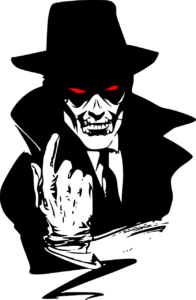I was thrilled when Neal Schaffer agreed to participate in my series about challenges facing social media marketing. Neal is a social media speaker and consultant ranked by Forbes and others as a top influencer. I had the privilege of writing for his Maximize Social Business blog for three years, and have also spoken at several of his Social Tool Summit conferences.

The timing was great, as Neal told me he had just returned from a trip around the world in which some of these very same topics came up in discussions with major brands. Plus, Neal has just finished his book The Business of Influence, which is also relevant, as you’ll see.
See below for the Q & A; and thanks, Neal Schaffer for sharing your views!
Are the social media waters still safe for marketing?
Social media was made for people and social media is really returning to a people media. Not to say that there’s no role for brands on social media. But I think it is getting more and more intrusive for brands to try to take part in the conversation. That’s why you have all the case studies of brands talking to each other. At the end of the day, as the average social media user, “are you using social media to communicate with brands?” And the answer is “no,” right? I think brands need to be cognizant of that. So, it’s still safe if it’s done right; I think the way to do it is to leverage other people, to incite word of mouth through influencer marketing. It’s not just leveraging celebrities that want to get paid, but brands building communities of influencers. I visited a major brand today that is the first brand I’ve heard that actually plans on doing it.
Have you been recommending a change in strategy regarding social media?
Definitely. An influencer component should become part of the mix. You have organic, you have paid, and now you have influencers. And I’m not talking about one-night stand campaigns but ongoing relationships. Whether B2B or B2C, it’s about finding those that you can tap into the community that can help your brand be heard; to cut through the noise and be known, liked and trusted.
What comes after social media?
That’s a really good question. Social media is more and more becoming people media, and I think you have millennials that have stopped watching TV and instead spend most of their time on YouTube or IGTV or perhaps Facebook Watch. I don’t think we’re there yet but considering how much time teenagers spend watching YouTube videos, they are already watching that more than TV, so I don’t think we’re that far behind. A
Is Facebook still a good place to invest in social media marketing?
You can’t ignore Facebook, it is still the gorilla until something else comes along. If I‘m a B2C brand, I am still investing somewhat in Facebook. But it is 100% pay-to-play; and if I can get the same if not greater engagement organically on Instagram, why even bother with Facebook? Obviously, you have ad targeting capabilities but you can bring those over to Instagram. So Facebook is not looking as attractive to invest in social media marketing as it used to be, and with the way that Instagram engagement is, it is looking even less attractive. It is someplace you need to have a platform, but I think you really need to look at your ROI there from organic, paid, influencer, across these different social networks and you’ll find, as I have, that there are many consumer brands that post much more frequently on Instagram than Facebook. And I’m sure they’re doing more advertising on Instagram as well.
Have these changes affected your social media habits for personal brand building?
Absolutely! I tend to invest more in Instagram knowing that that’s where brands are, and where businesses look for influencers. I’m writing a book on influencer marketing so part of it is R&D. But yeah, I definitely look to build my brand more visually in addition to sort of this business persona I have on Twitter or on LinkedIn; a visual representation of my professional self and even personal self, primarily on Instagram. I will share from Instagram to Facebook. I do little native Facebook these days.











